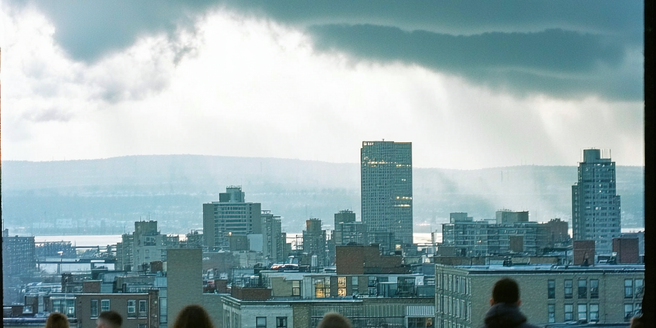
Understanding Cold Fronts and Their Characteristics
Cold fronts are defined by the transition zone where a mass of cold air replaces warmer air. Typically, they are marked by a drop in temperature, a shift in wind direction, and often precipitation, like rain or snow. These are key characteristics meteorologists look for when identifying cold fronts. The colder air behind a front is denser and flows under the lighter warmer air, causing it to rise, which can lead to cloud formation and storms. Understanding these defining features of cold fronts helps in predicting their development and the subsequent weather changes. This knowledge is crucial for sectors like agriculture and retail, which need to make informed decisions based on weather patterns to ensure that they minimize disruptions and maximize opportunities created by changing temperatures and consumer needs.
The Impact of Weather on Consumer Behavior
Weather has a profound impact on consumer behavior as it influences mood, activities, and purchasing decisions. Cold weather can lead to increased sales in warm clothing, heaters, and comfort foods, while reducing foot traffic in outdoor shopping areas. Studies show a correlation between temperature drops and spikes in e-commerce as consumers prefer to shop from the comfort of their homes. Retailers must understand these behavioral trends to align their strategies with consumer expectations. The perception of cold weather itself can trigger a desire for warmth and coziness, driving the purchase of related items. By anticipating these shifts, businesses can adjust inventory stock levels and marketing approaches, ensuring they meet the demands driven by weather-induced changes in consumer behavior.
Analyzing Retail Patterns During Cold Fronts
Retail patterns undergo significant shifts during cold fronts as consumer demands evolve. Data analysis shows that stores selling winter apparel, indoor recreational equipment, and home heating products often experience a surge in sales. Meanwhile, retailers that focus on warm weather activities may see a decline. By analyzing historical data on sales trends related to cold fronts, businesses can gain insights into customer preferences during these periods. This analytical approach helps in forecasting demand and optimizing inventory management. Retailers can tailor promotions and advertising campaigns to align with expected consumer interests, thereby enhancing customer satisfaction and driving revenue during cold spells. Recognizing these patterns allows retailers to pivot quickly and capitalize on weather-induced opportunities.
Case Studies: Retail Success Stories in Cold Weather
Numerous retailers have successfully navigated the challenges posed by cold weather through strategic planning and adaptability. For instance, a clothing chain capitalized on a sudden drop in temperatures by quickly marketing their winter collection, resulting in a significant sales boost. Similarly, a grocery retailer leveraged weather forecasts to preemptively stock shelves with comfort foods and beverages, catering to the increased home dining trend during cold spells. Another example includes an outdoor gear retailer who re-targeted their marketing efforts online, focusing on products suitable for winter sports and activities. These case studies highlight the importance of being adaptable and proactive in the face of changing weather conditions, allowing businesses to capture market opportunities and enhance customer satisfaction and loyalty.
Strategies for Retailers to Adapt to Cold Fronts
Retailers can implement several strategies to effectively adapt to cold fronts. Firstly, leveraging weather data to forecast demand allows for better stock management, ensuring popular items are available when needed. Implementing targeted marketing campaigns that highlight cold weather essentials can attract consumers’ attention. Offering promotions or discounts on relevant products can incentivize purchases, while cross-promotions with complementary items can enhance sales. Additionally, retailers should consider enhancing their online presence to cater to consumers preferring to shop from home due to adverse weather conditions. Staff training on customer preferences during cold weather can improve service quality and customer satisfaction. Finally, flexibility in supply chain logistics ensures stores can quickly replenish stock. By adopting these strategies, retailers can effectively respond to the challenges and opportunities presented by cold fronts.
Future Trends: Cold Front Prediction and Retail Innovation
The future of retail amid cold fronts will increasingly rely on advanced predictive technologies and innovative strategies. Leveraging AI and machine learning for more accurate weather forecasts will enable retailers to anticipate consumer needs with precision. This predictive capability facilitates better inventory planning and targeted marketing strategies. Furthermore, integrating smart technologies in retail spaces, such as climate-responsive displays, can enhance customer experiences. Retailers may also explore partnerships with meteorological services for real-time updates to remain agile in their operations. As the climate continues to impact retail patterns, businesses that innovate and adapt quickly will maintain a competitive edge. Embracing future trends in cold front prediction and retail innovation ensures that businesses remain responsive and resilient, effectively meeting consumer demands.
